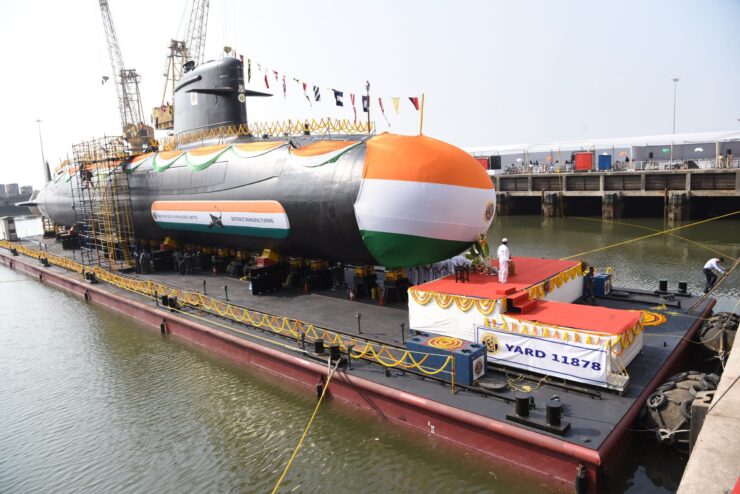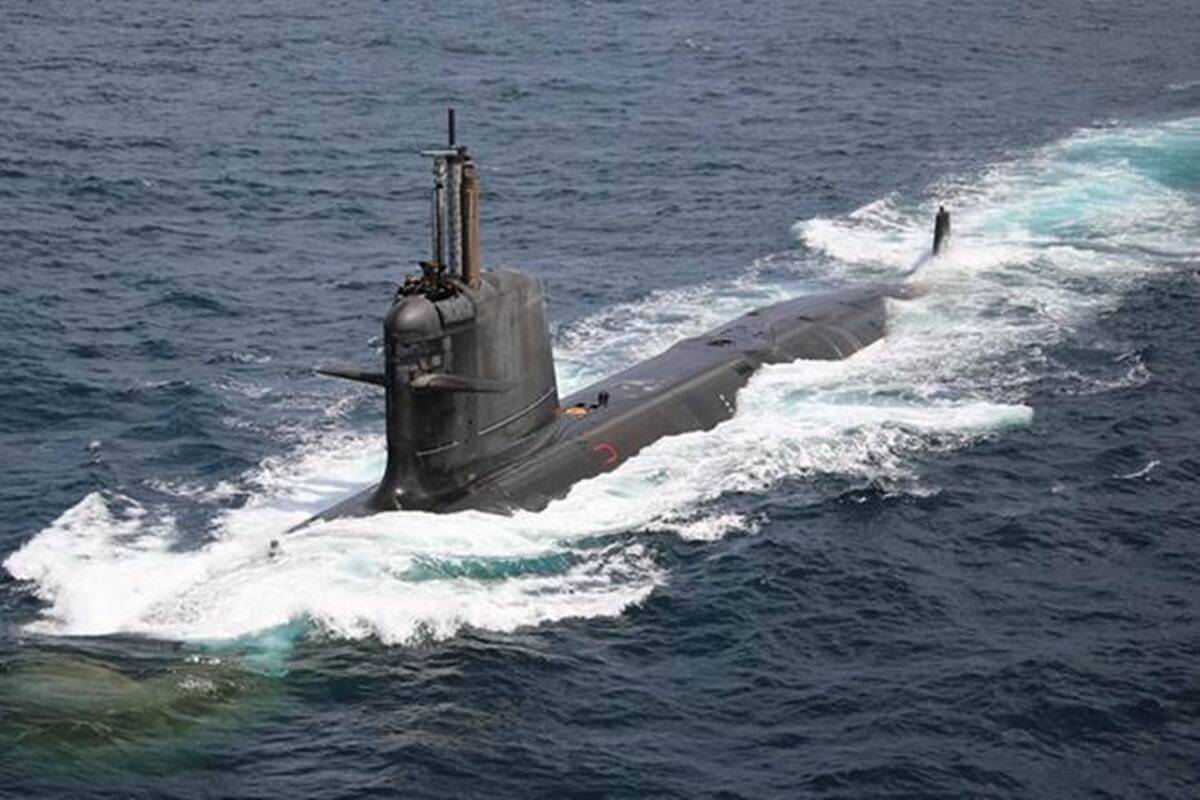
The Indian Government has set an ambitious defence export target of Rs 35,000 crore ($5 billion) by 2025; and the Ministry of Defence (MoD) has been touting it achievements notwithstanding the pandemic. But the much vaunted Atmanirbharta (self-reliance) in defence will ultimately depend on the country’s ability to design, develop and manufacture the bulk of its requirements.
To boost the defence sector, the government has set up two Defence Corridors in Uttar Pradesh and Tamil Nadu so that it covers the entire country. The layout plans of the two projects are indeed ambitious: The corridors will house several defence industries and provide large-scale employment and serve as hubs that will interconnect and provide financial access to all kinds of professionals, entrepreneurs, and industry doyens from different disciplines.
However, even as these new manufacturing hubs are being chalked out, there are starting troubles in this area as the defence ministry’s ambitious plan for a second production line to build submarines, fighter jets, battle tanks, and helicopters stutters in the slow lane.
Take this one defence deal that highlights the delays affecting India’s defence modernisation plan. On September 8 this year, the Cabinet Committee on Security chaired by Prime Minister Narendra Modi cleared the Rs 22,000-crore proposal to buy 56 C-295 military transport aircraft for the Indian Air Force from Airbus Defence and Space, Spain. Cleared by the Defence Acquisition Council in 2015, the contract was finally signed on September 24 this year, after a delay of six years. As per the contract, Airbus will assemble 40 of the 56 C-295 aircraft in India in a joint venture with Tata Advanced Systems Ltd (TASL).
It is a significant step because the state-owned Hindustan Aeronautics Ltd (HAL) is the only Indian PSU that builds military aircraft. Yet, however momentous this deal might be, it will not instantly spur defence indigenisation within the country – what the government calls ‘Atmanirbhar Bharat’, where it wants Indian defence firms to not just produce military hardware but export them as well. TASL, for instance, will not be able to build copies of the C-295, upgrade it or even export it without its foreign partner because it does not own the design. The inability to break out of licensed production is a problem that has bedevilled India’s defence indigenisation process. The reasons range from a dysfunctional military-industrial complex dominated by the public sector and a lack of defence R&D to produce indigenous design, to patchy support for such products from the armed forces.
Another project, to build naval utility helicopters, is also caught in a tailspin. Public sector HAL wants to participate in the contest, fielding a variant of its indigenously designed ALH Dhruv, but the navy wants the PSU kept out, citing the fact that strategic partnerships (SPs) are meant only for the private sector. But HAL has cited the precedent of state-owned Mazagon Dock Shipbuilders Ltd (MDSL) being allowed in the P75 (I) submarine race to justify its inclusion. The government is believed to have pressed pause on the NUH (Naval Utility Helicopters) programme and allowed the navy to lease helicopters to tide over its shortfall. If indigenisation is the goal of the government, how long would it continue to press the pause button if an arm of the defence forces doesn’t want the product of a particular defence PSU?

As part of its ‘Atmanirbhar Bharat’ drive, the government has dissolved the Ordnance Factory Board (OFB) and merged its 41 ordnance factories into select defence PSUs. The MoD on September 28 issued the order for the dissolution of the OFB with effect from October 1, after which all its assets, staff and management would be transferred to seven newly constituted DPSUs. The government is also setting up defence corridors in Uttar Pradesh and Tamil Nadu to give out land to defence industries to set up manufacturing facilities. The MoD has notified a positive indigenisation list of 209 items, from warships to howitzers, embargoed imports, and assured domestic industry of orders worth Rs 4 lakh crore over the next five to seven years. All this is meant to jumpstart local manufacturing by domestic industry. The government has fixed a target of Rs 35,000 crore ($5 billion) exports each year by 2025.
The Strategic Partnership model should have fitted right in with this policy, but the MoD now feels it could be out of sync with its ambitious indigenisation policy. “The SP model is from a different era. It is a more advanced version of licensed production. Whereas, under Atmanirbhar Bharat, we want companies to have the knowhow and know-why,” says a senior defence ministry official. Knowhow enables licensed production while know-why brings the capability to independently design hardware that comes when design technology is transferred. As is the case with the Airbus C-295 deal, the foreign OEM will continue to be in the driver’s seat. The government’s SP model has been mired in delays, with three of the four projects still in their first stage.
While the MoD calls its tie-up with the private defence industry a ‘strategic partnership’, it is acutely aware that for the private sector it is just a business investment. “Defence industry is just one of the many options for the private sector player, who can invest their resources in real estate or airlines,” a defence ministry official says. This is also why private firms are wary of the SP model. “I am answerable to my shareholders, I have to pay interest on capital and I get no tax breaks from the government for investing in defence industry,” says the CEO of a private sector defence firm. “The SP model is not at all workable because it breaks the basic defence contracting principle where the government pays money to the prime contractor,” says Rahul Chaudhry, former CEO, Tata Power SED, and chair, FICCI Committee on Homeland Security.
South Korea’s Daewoo Shipbuilding and Marine Engineering is one of the five contenders for India’s Project 75 (I) submarine-building programme. This offer is not without its irony. South Korea and India both bought submarine-building knowhow from the same West German firm, HDW, in the early 1980s. While the Indian conventional submarine programme floundered for decades, embroiled in corruption scandals and bureaucratic indecision, the South Korean programme developed, improved variants, and mastered the design till it fielded the DSME-3000, a version it is now offering the Indian Navy.

Over the past decade, South Korea has been a surprising entrant into the Indian defence market. South Korean firms have won a Rs 4,500 crore contract to supply 100 K-9 howitzers to the Indian Army and emerged the cheapest bidders in contests to supply minesweepers for the Indian Navy and self-propelled air defence gun missile systems for the Indian Army. It has mastered the ability to manufacture sophisticated military hardware across all three domains — land, sea, and air — a feat accomplished only by the big countries with deep pockets, like China, Russia, and the US.
These are lessons the MoD needs to learn. India’s first attempt to create a level playing field for the private sector — the Raksha Udyog Ratna (RUR) scheme in 2006 — had proposed to designate select private sector majors as RURs to enable them to compete for defence contracts on par with the public sector. The scheme was scrapped in 2013 after the private firms left out of the process said the government was creating monopolies within the private sector.
However, there are several institutions playing a critical role in indigenisation of defence industries, such as the Defence Research and Development Organisation (DRDO), the Defence Public Sector Undertakings (DPSUs), the Ordnance Factory Board (now dismantled and merged with DPSUs), and private organisations. The country’s overdependence on the erstwhile Soviet Union brought a change in India’s approach to defence industrialisation from licence-based production to production based on indigenous design, which proved to be a blessing in disguise in the long run.
A significant beginning in defence indigenisation was made in 1983, when the government sanctioned the Integrated Guided Missile Development Programme (IGMDP) to develop five missile systems: Prithvi (surface-to-surface); Akash (surface-to-air); Trishul (the naval version of Prithvi); Nag (anti-tank); and the Agni Ballistic missiles with different ranges, i.e. Agni (1, 2, 3, 4, & 5).
In 1990, the Self-Reliance Review Committee (SRRV) under APJ Abdul Kalam had formulated a 10-year plan under which the self-reliance index (SRI – defined as the percentage share of indigenous content in total procurement expenditure), was to be increased from 30% in 1992-1993 to 70% by 2005. But this target has not been achieved till today. The indigenous efforts were not adequate to meet the requirements of the armed forces, which led to a shift of focus towards co-development and co-production in partnership with foreign companies. A beginning was made in 1998, when India and Russia signed an inter-governmental agreement to jointly produce the BrahMos supersonic cruise missile. Apart from Russia, India has also partnered with other countries such as Israel and France for a number of projects. Indigenisation in defence is critical to national security also. It keeps intact the technological expertise and encourages spin-off technologies and innovation that often stem from it.
Besides, in view of the prevailing scenario along the borders in the Northern and North-Western sector, indigenisation is needed in order to avert the threats associated with frequent ceasefire violations like the Uri, Pathankot and Pulwama attacks. Another major positive impact of expanding defence manufacturing will be the growth of satellite industries that will boost generation of employment opportunities.
As per government estimates, a reduction in 20-25% in defence related imports could directly create an additional 100,000 to 120,000 highly skilled jobs in India. Besides, a self-sufficient and self-reliant defence industry will place India among the top global powers.
To ensure indigenisation of defence, the government has been laying emphasis on “Make in India” though its implementation needs to be fine-tuned. If indigenisation in the defence sector is to progress, it is imperative to give a boost to the private sector as it can infuse efficient and effective technology and human capital required for modernisation of indigenous defence industry. The private sector must be allotted big ticket contracts in order to strengthen their confidence and reduce the trust deficit between private and government sectors. It’s important to ensure a level playing field for the private industry, DRDO, DPSUs and the Ordnance Factories.
If the aim is to achieve export capability, then the weapon system must first be tried and tested with our armed forces. It is also imperative that software industry and technologies like Artificial Intelligence and cyber security be used to develop and manufacture the “microchip” indigenously. The personnel at the Department of Defence Production need to be trained and given longer tenures to ensure continuity. There is a need to boost in-house design capability amongst the three services. For instance, the Navy has progressed well on the path of indigenisation primarily because of the in-house design capability, the Naval Design Bureau.
The combined efforts of the government and private players will help achieve India’s goal of self-reliance in defence, generate direct and indirect employment opportunities and spur the growth of private domestic manufacturers, MSMEs (Micro, Small, and Medium Enterprises) and start-ups.
– The writer is a senior journalist and media consultant. The views expressed are of the writer and do not necessarily reflect the views of Raksha Anirveda.








